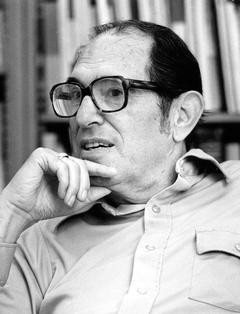-
(b.) -1910 March 19(d.)1997 February 10
Bio/Description
A U.S. meteorologist, whose research included El Ni?o, he was born in Bridgeport, Connecticut and grew up in Fall River, Massachusetts. "On graduation from high school, he was offered a four-year scholarship to Wesleyan University in Connecticut; however, because of his father's illness and the Great Depression, he decided to stay home and try to find a job to help his family out." Ultimately, he studied at the University of Michigan and joined Massachusetts Institute of Technology (MIT) in 1936 as research assistant. In the 1930s he studied the phenomena of the Dust Bowl. In 1941 he received his Master's degree from the American Institute of Aerodynamics and Astronautics. From 1941 to 1971 he was Chief of the Extended Forecast Division of the U.S. Weather Bureau (now the National Weather Service). In the 1940s he developed the 5-day-forecast, and month and season forecasts in the 1960s. Further, he was responsible for forecasting for the Allies during World War II in Northern Africa. He helped to develop the system of passenger flight weather forecasting, and researched the interaction between the oceans and atmosphere. He was involved in the research of the El Ni?o phenomena in the Pacific Ocean and its relevance to the world climate. In 1971 he joined the Scripps Institution and established the first Experimental Climate Research Center. His prognosis of warm weather during the Arab oil embargo of 1973 greatly aided domestic policy response. He received many honors and awards, including election into the National Academy of Sciences and the American Academy of Arts and Sciences. He won the Gold Medal of the U.S. Department of Commerce for distinguished achievement. He published more than 200 papers and worked in the field of meteorology until 1989. After the war, meteorology changed to a more computational science. He had employed the barotropic numerical forecast model developed by Jule Charney for several years following Rossby's classical 1939 work. At the Institute of Advanced Study in Princeton, Johnny von Neumann initiated a project in numerical forecasting with the use of the supercomputer of the day. He was fond of noting that "at the first meeting to discuss the new Princeton endeavor, to which about 35 of the nation's top meteorologists, including Jule Charney, were invited to give advice, no one suggested, as a starting point, the barotropic model!" His role was mainly to make sure the computer-generated forecasts resembled the real atmosphere. In ?Turing?s Cathedral? by George Dyson he is seen in a photo of The ENIAC meteorological expedition, Aberdeen Proving Ground, March 1950.
-
Date of Birth:
1910 March 19 -
Date of Death:
1997 February 10 -
Gender:
Male -
Noted For:
Made sure the computer-generated forecasts resembled the real atmosphere for the project in numerical forecasting using the supercomputer ENIAC at the Institute of Advanced Study in Princeton -
Category of Achievement:
-
More Info:


